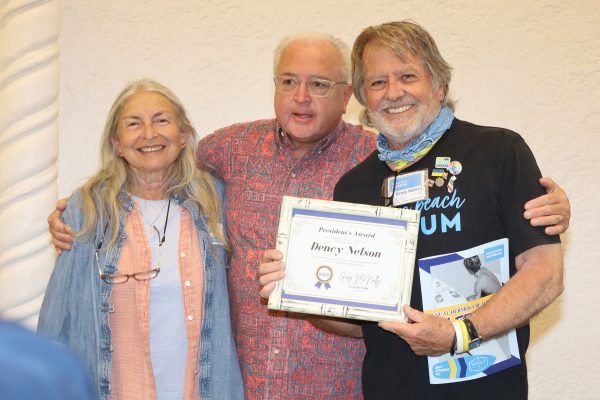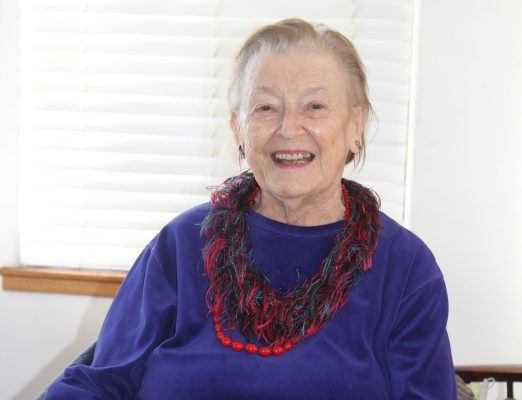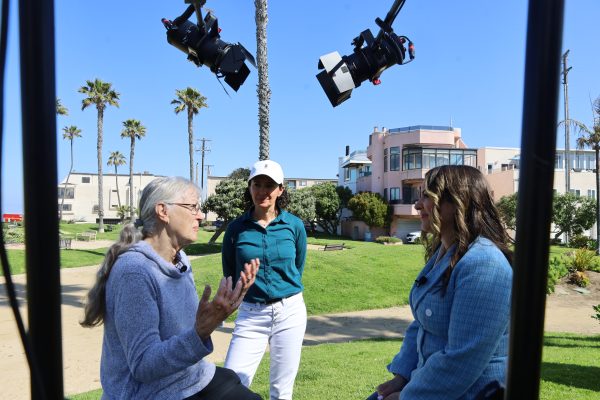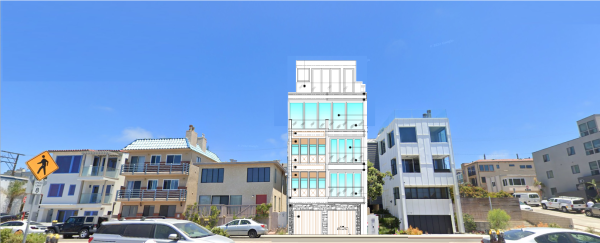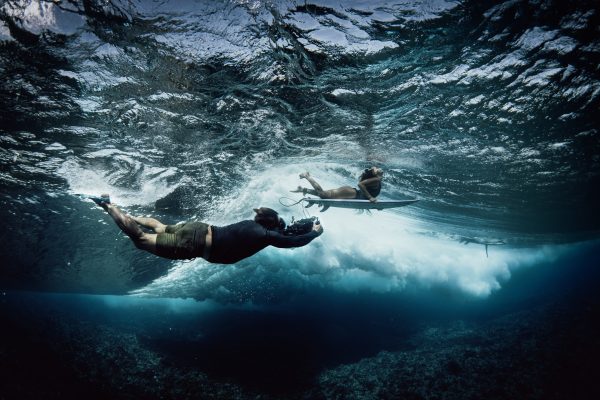by Mark McDermott
Mark Sundeen heard the call. It was a beckoning countless others have heard across two centuries of American history: “Go West, young man.”
The problem was that, as a California native who grew up in Manhattan Beach and attended college at Stanford, he was already at the far western edge of the continent. And anyway, his longing wasn’t so much geographic as it was spiritual. Sundeen wanted a kind of freedom and authenticity that seemed to have been squeezed out of modern American life. In his new collection of essays, “Delusions + Grandeur: Dreamers of the New West”, Sundeen recalls taking this existential crisis to a writing teacher during his last year in college. The teacher, who was from Montana, paused and looked out his window before offering some common sense advice.
“Have you considered doing some manual labor?” he asked.
A friend told Sundeen of a place called Desolation Canyon, in Utah, “where you could get paid to row a boat eighty-four miles downriver without seeing any roads, bridges, or buildings.”
And so Sundeen went east, into a wilder West. He worked seasonally for 11 years as a river raft guide, and spent winters turning himself into a writer. “Delusions + Grandeur” is his fourth book, and though on its surface it is a collection of essays and journalism pieces spanning 24 years, it is also a narrative of Sundeen’s own life as a seeker in the American West.
“I came of age in the 1980s in shiny Southern California with a sense that someone had replaced America with a second-rate imitation,” Sundeen writes in the book’s introduction. “On the flickering screen I was told by a twinkly-eyed president that ours was a nation of moral strength and innovative spirit, but when I flipped through the channels, it was more preening singers and weeping preachers and huffing wrestlers and hustling idols, all of them—including the president—actors remarkable only for their hairstyles. Resistance to this fakeness propelled me first to become a literature major at a fancy university, then a sunbaked dropout in a desert trailer.
“When I finally arrived in the middle of nowhere, free from that artifice, I encountered the people who occupy these essays. They were like me: driven and haunted by a sense that something in our culture, our economy, our cities was terribly wrong.”
“I became a reporter of sorts, unable to make things up, delighted by the shocking weirdness of real life,” Sundeen writes. “What interested me, at first, was a type of extreme escapist, who like me had hitched himself to some vision and defied common sense to pursue it.”
Sundeen, a Class of 1988 Mira Costa graduate, will return to Manhattan Beach tomorrow and appear at an event at Pages bookstore, a conversation about “Delusion+Grandeur” with fellow MCHS alum and author Michael Scott Moore.
There is a lot to talk about. The subjects of these essays are as varied as the dreams people take West — an Elvis impersonator in desert casino, a disillusioned young war veteran who disappears into a Montana wilderness, a sculptor with Mount Rushmore-esque aspirations instead dug a big hole in rock to house a speakeasy, a small city in Utah’s plan to build a water pipeline to fuel its improbable expansion, the Native American uprising against an oil pipeline at Standing Rock reservation in South Dakota, both Jack London and a middle-aged hardware man who impersonates him in Northern California, and an achingly revealing account of the life and loves experienced by the author across two decades in a trailer outside Moab.
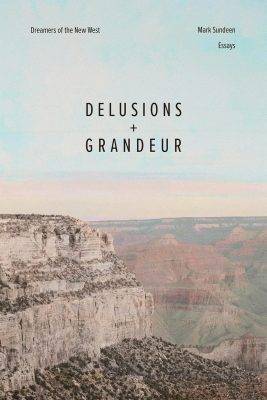 There is a dusty echo of Joan Didion’s great late 60s collection of narrative non-fiction stories about California, “Slouching Towards Bethlehem”, although Sundeen has a less unsparing and considerably more kindly regard for most of his subjects. Which is to say that he can see himself in them. He drifted to the West for some of the same reasons they did, most fundamentally because he wanted to create a bigger sense of life for himself. The wide open skies and wild places of the West offered boundless possibilities.
There is a dusty echo of Joan Didion’s great late 60s collection of narrative non-fiction stories about California, “Slouching Towards Bethlehem”, although Sundeen has a less unsparing and considerably more kindly regard for most of his subjects. Which is to say that he can see himself in them. He drifted to the West for some of the same reasons they did, most fundamentally because he wanted to create a bigger sense of life for himself. The wide open skies and wild places of the West offered boundless possibilities.
“In the days of Joan Didion, and before that Raymond Chandler, all of the people in search of a new identity, would just move west until they hit the Pacific Ocean and that was as far as they could go,” Sundeen said in an interview this week. “But it does seem like now there’s a bit of a rebound. Because California has become so stratified and expensive, it’s hard to make it as a drifter anymore, and so people kind of bounce off the coast and are now in Arizona, Utah, New Mexico and Montana.”
Revisiting 24 years of his work was, for Sundeen, exploring his own often wayward trajectory.
“I think one thing I learned was that I was really, even in the early times, trying to tell my own story,” he said. “But I was unable to express my own emotions, and so I would find these characters who I felt a kinship to, and I would write about them instead. I came from California and just felt so repelled by the materialism and the money and the ambition. That was why I was drawn to these people, like the hole-in-the-rock sculptor or the Elvis impersonator or the Jack London impersonator, who had really rejected mainstream success but they had an artistic vision that no one was really paying attention to, and they were pursuing it with passion. And I love that about them. Looking back now, it doesn’t take a psychiatrist to see that that was me — I was trying to pursue my vision, and I was finding them as a vehicle.”
Sundeen’s previous books likewise dug deep into off-the-beaten path American dreamers, particularly “The Man Who Quit Money” (2011), about a cave dwelling man who refuses to engage in the monetary system, and “The Unsettlers” (2017) about three families pursuing different ways to get back to the land and a simpler way of life. But while these books were critically acclaimed, and certainly spoke to his own seeking as well as their subjects, Sundeen’s larger ongoing beat as a writer — for such magazines as Outside and the New York Times Magazine — almost always involved journeys into (and out of) the American West. As he gathered the pieces with the idea of a collection in mind, Sundeen found a natural coherence in the work, and the people who populate its stories.
“What unites these dreamers and pilgrims and hucksters is the freedom of landscape, the sense of infinite spirit and possibility in the canyons and deserts and mountains, which reflects back at us our own longing for freedom,” he writes. “Later I found in those grand empty vistas their own brand of delusion, rooted in the widespread yet false belief that one can outrun one’s former self.”
These delusions are not only individual but collective, none more pervasive than the very underpinning of the western United States — creating booming cities in deserts. No book about this cultural and physical geography would be complete without delving into water thievery (and chicanery, when it comes to the water abuses inflicted on Native American land). Sundeen’s book touches on these topics several times. In one uproarious scene, a 48-year-old political activist on his first road trip east of the Rocky Mountains — to Washington D.C. to protest the Iraq War — somewhat randomly asks the question, How many golf courses are there in the municipality of Phoenix, Arizona? The answer, at that time, was 758, a number that has doubtlessly grown over the last two decades. But his essay “Green Green Grass of Home” tackles the issue head on, investigating why and how Washington County Utah, home of the fastest growing metro area in the U.S., St. George, is planning a 150 mile long pipeline to ferret Colorado River water from Lake Powell. It’s an essay that is a worthy follow up to the classic book on the topic of water and the American West, Marc Reisner’s “Cadillac Desert”, and it showcases both Sundeen’s wry humor and exquisite gifts as a reporter.
“Thirteen golf courses bloom green amid desert cliffs,” Sundeen writes. “Capillary culs-de-sac pulse with turf. Plans are underway for a Caribbean-slash-Polynesian water park with a 900-foot lazy river, a seven-story slide, and an artificial wave pool for surfers. Bulldozers broke ground on a master-planned tract called Desert Color, where 33,000 souls will dwell near the shores of—get this—man-made lakes! The drawings show denizens tanning on white-powder beaches and SUPing across waters that glisten like chunks of turquoise in the 300 days of annual sunshine. Washington County, in fact, guzzles more water per capita than any metro area in the Southwest.”
How is this for delusion? Eight inches of rain fall annually in Washington County, but as Sundeen reports, in 2015 residents used 317 gallons of water per person per day, more than the 204 gallons used by Las Vegas residents daily or 186 in Phoenix (Los Angeles, by comparison, is considerably more thrifty, at 77 gallons per resident daily). Sundeen quotes one of his patron saints, the writer Edward Abbey, regarding the arid West: “There is no lack of water here,” Edward Abbey wrote, “unless you try to establish a city where no city should be.”
But Sundeen is too thorough a reporter to paint the issue in only black and white. He talks to county commissioner Dean Cox, a fifth generation St. Georgian and descendent of the Mormon founders of the area, who notes that the community has used ingenuity and innovation to improve the lives of residents since its origins in 1861.
“You either believe that technology will make things better or that we’re doomed,” Cox tells him “I believe the world is getting to be a better place. And I’d rather import water than export children.”
If there is one character who stands slightly apart from the others in Delusions+Grandeur, it is Noah Pippin, the Iraq war veteran who went missing while hiking along the 1,000 ft. Chinese Wall wilderness area of Montana in September, 2011. The piece is titled “Why Noah Went to the Woods” and it is a masterpiece of excruciatingly beautiful writing and dogged reporting. What is different about Pippin, relative to the other subjects of this book, is that whatever dreams he may have harbored took on a nightmarish tint after three tours in Iraq and a return to civilian life that offered nothing approaching a soft landing. The only apparent commonalities Sundeen and Pippin are that both could live matter-of-factly at times out of their cars — Sundeen did so often in his itinerant days as a rafter and Outward Bound leader, Pippin did so while applying successfully to become a police officer in Los Angeles after his third and final combat tour. The less apparent commonality is that each rejected the rat race of consumer society and went off to the wild to find something else. Sundeen came back to report on what he found. Pippin never returned.
“Why Noah Went to the Woods” offers a few answers but more questions, as only the best writing does. Sundeen somehow embeds, not only with Pippin’s family as they spend over two years searching for their lost son, but with his former Marine comrades, including the remarkable Matthew Trigo, a Bronze Star decorated soldier who was the hero of everyone in Charlie Company One Five, including Pippin. Trigo continued to look after his men after they’d returned to the more deceptively treacherous terrain of workday American life, but there was no reaching Pippin.
“He was searching for peace,” Trigo told Sundeen, “and couldn’t find it, so he went to wilderness, where there is nothing to rebel against. You can’t rebel against nature.”
There is a moving scene two years after Pippin’s disappearance in which you catch a glimpse of Sundeen’s wildly empathetic heart. He is in Michigan, with the parents of the missing soldier, who are devout Christians, and have never stopped hoping to find their son.
“When I left the Pippins in November, they prayed with me, asking for an end to this, hoping that if Noah was alive he might contact them,” Sundeen writes. “The war is officially over now, but it wanders our woods, haunts our dreams, and occupies our prayers.”
If you look the part of the book nobody generally looks at, the page before the dedication that includes the Library of Congress cataloging data— intended to organize books by type of content — “Delusion+Grandeur” is categorized thusly:
“Men, White—United States—Psychology. | White people—United States—Attitudes. | Masculinity—United States. | United States—Civilization—21st century.
And it’s true that the book includes a lot of men, while the sections on Standing Rock reveal the persistent cultural differences between Native Americans and white Americans (even the white activists allied with the Lakota during the pipeline protests), and the collection cumulatively is indeed a meditation on 21st century civilization as it presents in the United States. It’s a broad canvas, however. In one essay, Sundeen travels to North Dakota, which is the epicenter of the booming drone industry, and despite his peacenik misgivings he can’t help but like the military and tech entrepreneur folks he encounters, who are, yes, all white males. They aren’t all that dissimilar from the more unconventional characters elsewhere in the book — the Jack London impersonator, the Elvis impersonator, the drunken hole-in-the-rock sculptor, the tiny house enthusiasts at a convention in Colorado (an essay called “Tinier Than Thou”) and even Sundeen himself, they live under the thrall of endless possibility.
They have more in common than anything that separates them. All these disparate characters today would be said to be living in “red states” or “blue states” — mostly red, in this case — but there is an idiosyncratic American optimism most carry, and a hankering for self-invention.
But an interesting thing occurs with Sundeen himself by the time we reach the final, and most personal essay, “Shinglewide,” about the single-wide trailer outside Moab that has served as a small personal stage on which many of his personal dramas have unfolded. It reminds you of the great Dylan quote, “You turn around one day, and it’s a different stage, and a different set of characters.” The trailer begins as a low-rent but cool option that helps enable his freedom and hence life as a fledgling writer, then through the decades houses a couple unruly love affairs, and finally, during the pandemic, is the refuge Sundeen takes his wife and infant son to keep them safe. By this time he’s an established author, a teacher, and a contentedly settled family man. That endless possibility he sought has narrowed, blissfully so. He’s made choices. His wandering has led to a different kind of wonder.
“Like a lot of these archetypes, I was kind of running from internal things,” Sundeen said. “I was drawn to the landscape, to the vast emptiness. But also, I just wanted to be alone. And I hadn’t really wrestled with that yet, and I hadn’t really come to terms of, like, why I wanted to go live by myself in the trailer in the desert. I guess that I was pretty much not self-aware. And, of course, instead of having the kind of wisdom or depth to write about myself, I would write about the people and things that I knew were expressing that. But it would take many years of life and therapy to figure out what I was doing 23 years ago.”
“I think if you read the last piece, ‘The Shinglewide’, which I just wrote during the pandemic, looking back at those years, I finally had some wisdom on it — on just trying to reinvent myself…of thinking that I was just kind a kid from the suburbs, from Manhattan Beach, that could never grow up while living there.”
At least one of the seekers in this book had found peace. Sundeen writes:
As May began, before leaves had returned to most trees, a heat wave swept through. I pushed Bodie in his stroller along the bumpy dirt road to where it crossed the creek, then turned around and returned home, peeking under the canopy to see that he was asleep. I parked him beside the kitchen window, beneath the plum that had died and come back as another tree. I eased onto the cracked wooden steps and watched my son’s chest rise and fall, his toes twitch, as he lay sheltered in the spreading shade.
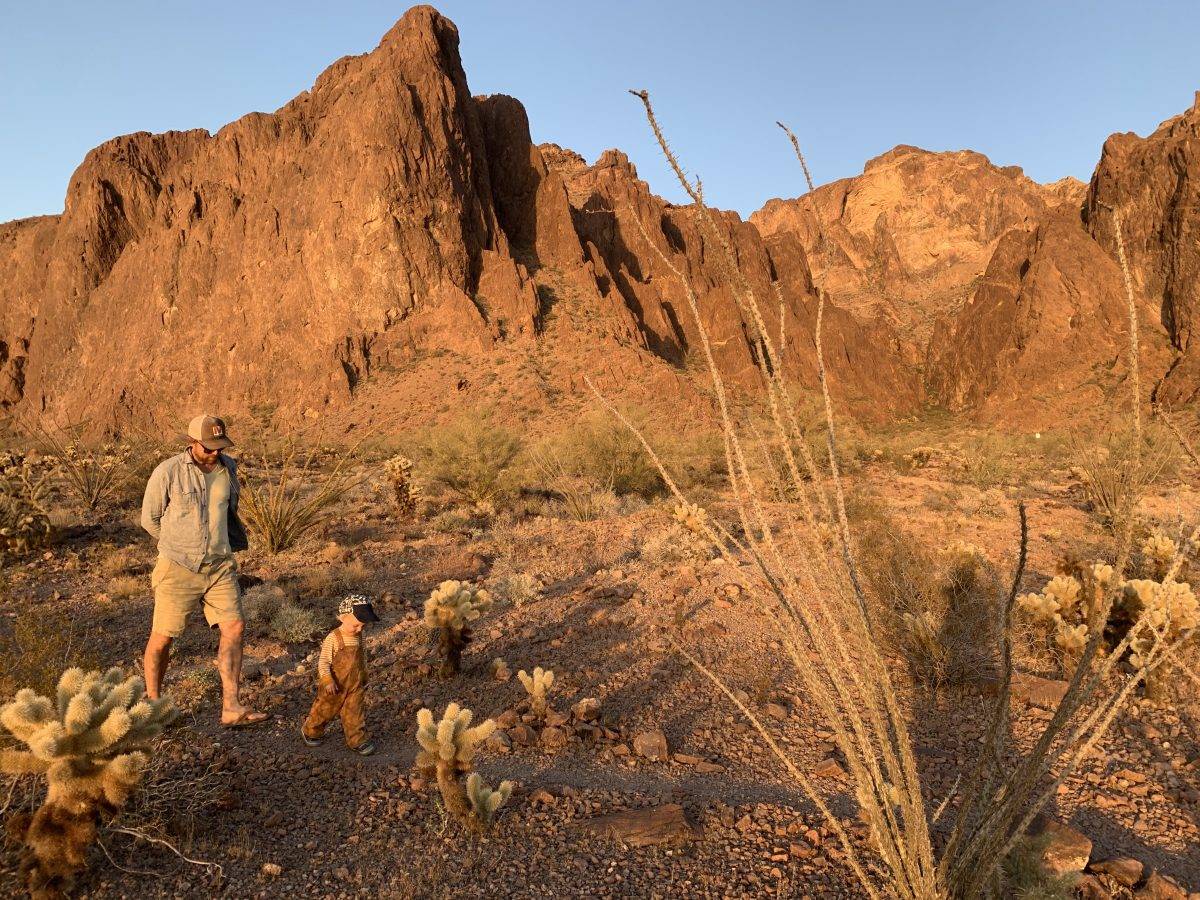
Mark Sundeen, in conversation with Michael Scott Moore, will be at {pages: a Bookstore} in downtown Manhattan Beach March 26 at 6:30 p.m.


